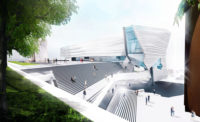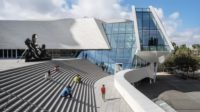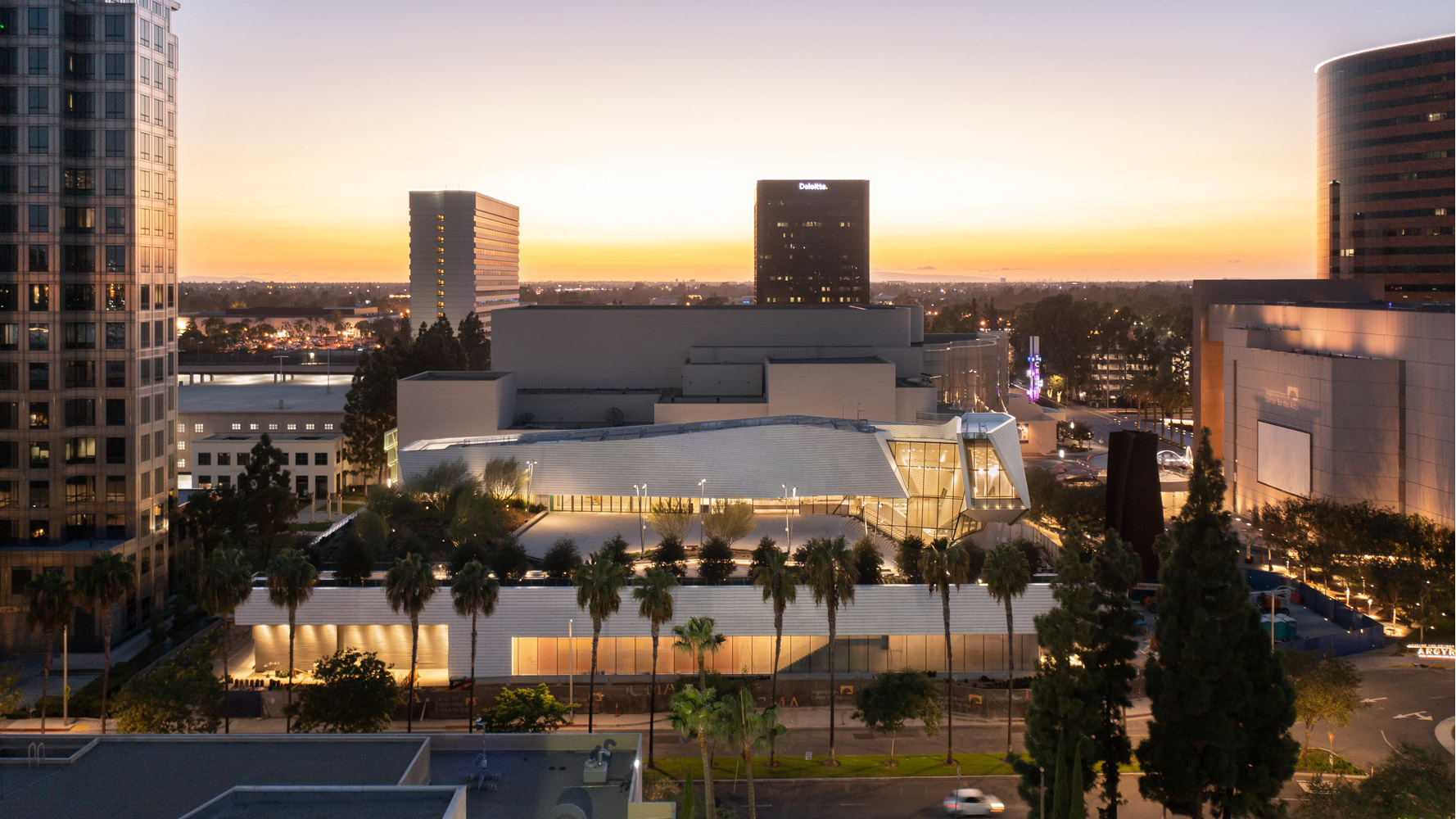The Community-Centered Orange County Museum, by Morphosis, Opens in Southern California

The $94 million, 53,000-square-foot project by Morphosis is finally complete, nearly 14 years after the Los Angeles-based firm won the competition to design it. Photo © Mike Kelly

Photo © Mike Kelley

Photo © Mike Kelley





Architects & Firms
Last Saturday, a dramatic building by Morphosis opened to the public: the Orange County Museum (OCMA). Sited on the campus of Segerstrom Center for the Arts (SCA), in Costa Mesa, California, this ambitious project—which had weathered multiple changes in program, scheme, and museum leadership—finally reached completion, more than 14 years after Morphosis won the competition to design it. (The museum’s prior location was about seven miles away in Newport Beach.)
The resulting $94 million, 53,000-square-foot structure is a hybrid that’s “part urban space, part landscape, part building, part outdoor, part indoor,” says Morphosis founding partner Thom Mayne. As SCA’s last undeveloped parcel, the site—long intended for an art museum—had been a grassy field, explains Morphosis partner-in-charge Brandon Welling, “and that inspired us [conceptually] to lift the field and insert the museum under it.” By then creating a roof deck one story up, with full public access, he adds, “the design essentially gives back to the community 70 percent of the building footprint.” That 28,000-square-foot “outdoor room” includes landscaping by The Office of Jim Burnett, as well as a grand stairway that’s less a circulation route than an amphitheater and social gathering space, overlooking the plaza below.
The entry sequence, proceeding from that plaza at grade, is visually and spatially charged. While revealing strategic expanses of glass, much of the building is wrapped in an off-white rain screen of lightly glazed terra-cotta tile. This outer skin warps, bends, and undulates over the building, yielding an irregular form that’s sculptural in the round. On the entrance facade, the wrapper bows inward to honor a towering, weathered-steel Richard Serra sculpture, called “Connector,” out front, which pre-dates OCMA’s building at SCA. The terra-cotta sheathing also curves inward from the exterior, blurring boundaries between inside and out, as it winds up through a soaring, skylit atrium. There, translucent glass walkways crisscross the vertical void overhead.

1

2
Photos © Mike Kelley, click to enlarge.
In contrast to such dynamism, the galleries—visible behind the lobby reception desk, through a bowed glass wall—are white, rectilinear, and serene. Luminously top-lit with louvered LEDs that evoke daylight, these spaces sublimely defer to the museum’s collection of mostly 20th and 21st century art with ties to California.
The program also includes a coffee bar and museum shop at one end of the lobby and, upstairs, a smaller gallery, suitable for works on paper, as well as a restaurant and bar that can open to the roof terrace.
Housing a total of nearly 25,000 square feet of galleries—in addition to art display opportunities on the roof terrace—the new building doubles the exhibition space of the museum’s previous home. With such enhanced offerings, OCMA CEO and director Heidi Zuckerman has prioritized embracing the community. Following her appointment in early 2021, she secured a $2.5 million gift from Lugano Diamonds, a jewelry store in Newport Beach, enabling OCMA to operate admission-free for the next 10 years—making sure its doors are wide open to all.






